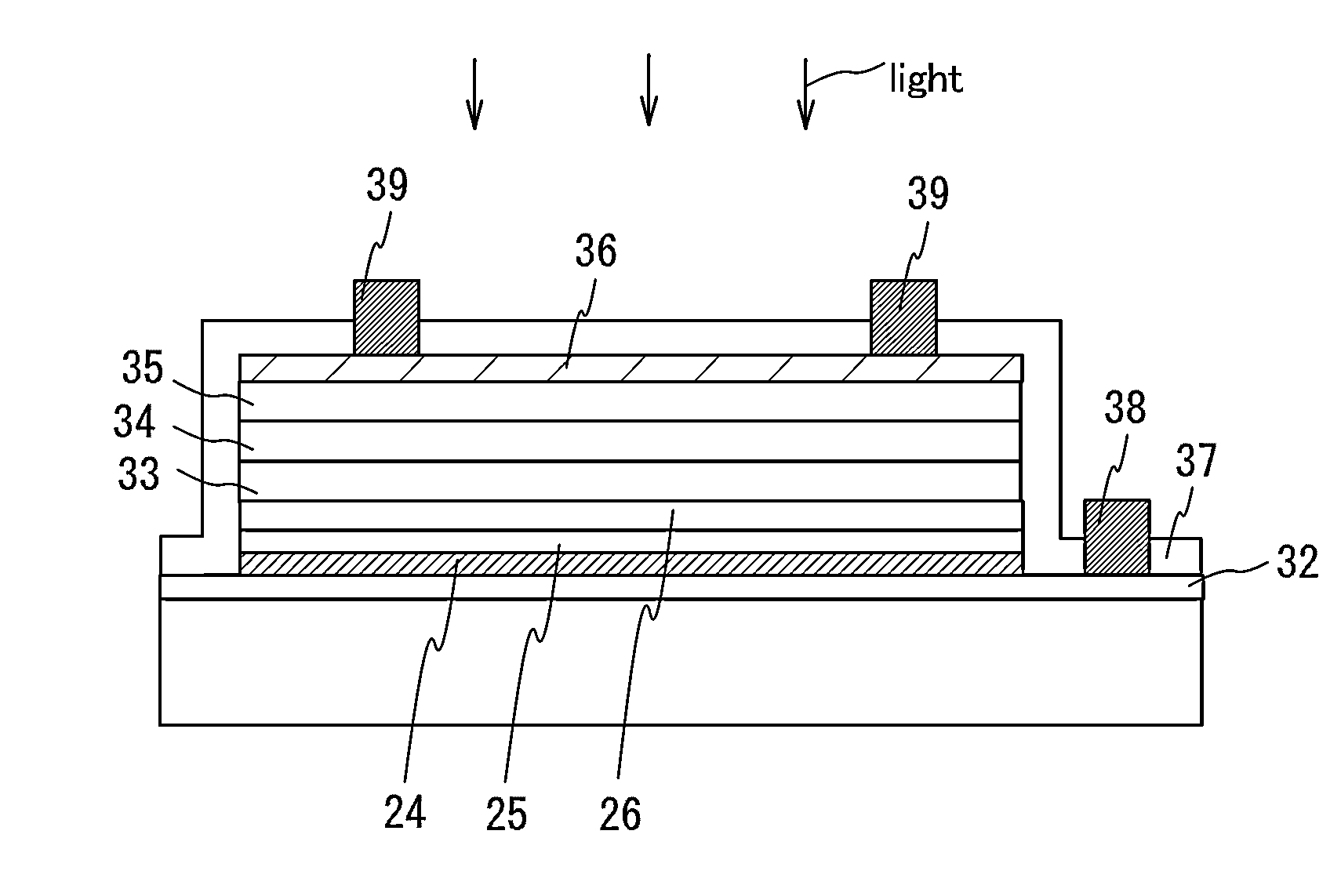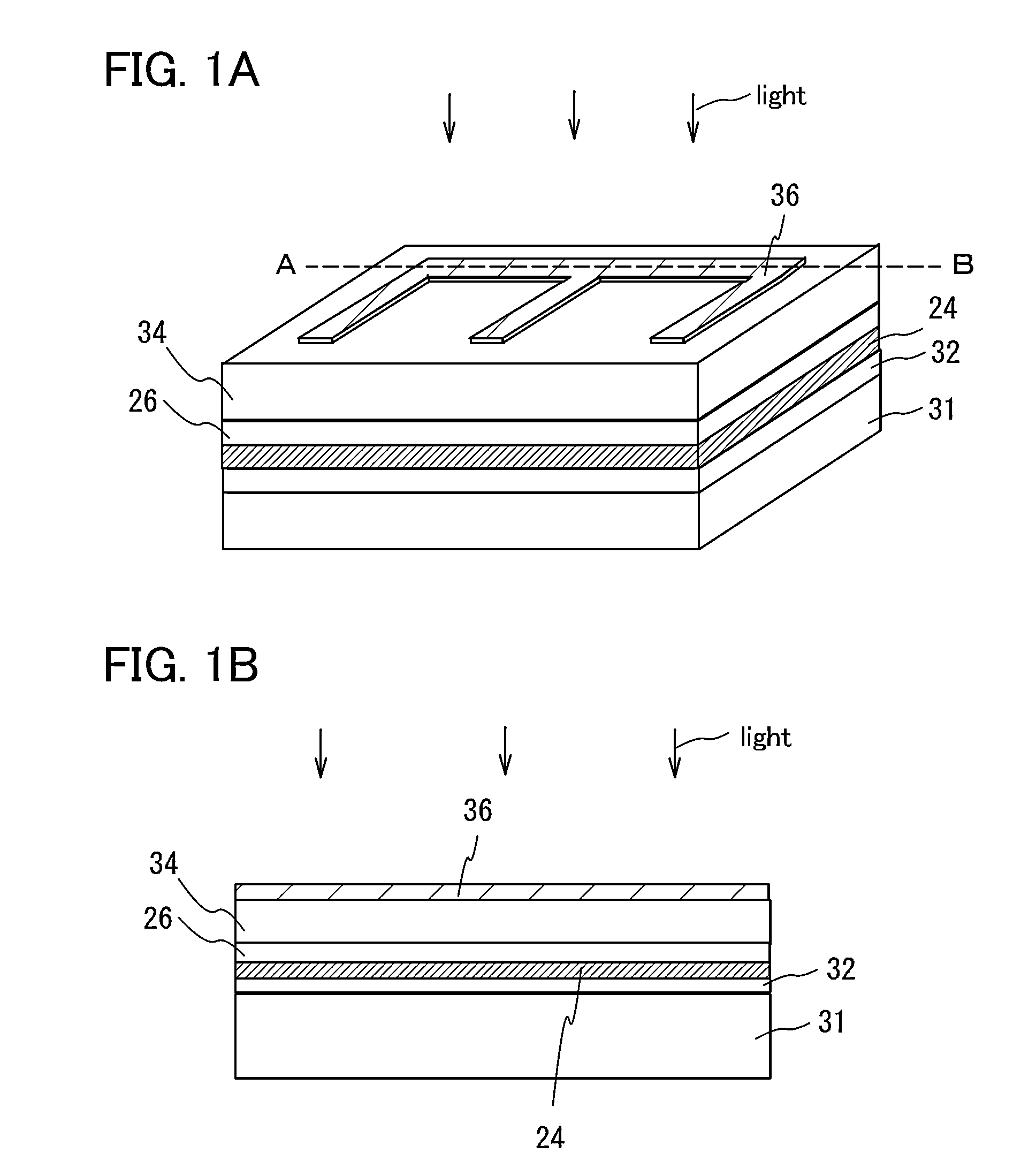Semiconductor device and manufacturing method thereof
a semiconductor and manufacturing method technology, applied in semiconductor devices, solid-state devices, basic electric elements, etc., can solve the problems of high resistance, increased concentration of impurities, loss, etc., and achieves high-reliability semiconductor devices, efficient removal, and low resistance
- Summary
- Abstract
- Description
- Claims
- Application Information
AI Technical Summary
Benefits of technology
Problems solved by technology
Method used
Image
Examples
embodiment 1
(Embodiment 1)
[0038]Embodiment 1 discloses with reference to FIGS. 1A and 1B a semiconductor device including a metal substrate or a substrate provided with a metal film, a copper (Cu) plating film over the metal substrate or the metal film, a barrier film over the Cu plating film, a single crystal silicon film over the barrier film, and an electrode layer over the single crystal silicon film.
[0039]FIG. 1A is a perspective view of a semiconductor device, and FIG. 1B is a cross-sectional view taken along the broken line A-B of FIG. 1A.
[0040]The semiconductor device includes a metal film 32 over a substrate 31, a Cu plating film 24 over the metal film 32, a barrier film 26 over the Cu plating film 24, a single crystal silicon film 34 over the barrier film 26, and an electrode layer 36 over the single crystal silicon film 34.
[0041]The substrate 31 may be, for example, an insulating substrate such as a glass substrate, a quartz substrate, a ceramic substrate, or a plastic substrate, a s...
embodiment 2
(Embodiment 2)
[0050]Embodiment 2 discloses with reference to FIGS. 2A and 2B, FIGS. 3A to 3C, FIGS. 4A to 4C, and FIG. 5 a method for manufacturing a semiconductor device, which includes the steps of: forming an embrittled layer in a single crystal silicon substrate which is a first substrate by doping a surface, preferably an entire surface, of the single crystal silicon substrate with ions which are generated from a hydrogen gas; forming a barrier film over the single crystal silicon substrate; forming a Cu plating film over the barrier film; preparing a second substrate which is a metal substrate or a substrate provided with a metal film; bonding the single crystal silicon substrate and the second substrate to each other with the Cu plating film interposed therebetween or with the Cu plating film and the metal film interposed therebetween by thermocompression bonding of the Cu plating film and the metal substrate or the metal film; forming a single crystal silicon film over the s...
example 1
[0077]Example 1 discloses with reference to FIGS. 6A and 6B, FIGS. 7A and 7B, and FIG. 8 a method for manufacturing a semiconductor device in which a first substrate with a Cu plating film and a second substrate provided with a metal film are bonded to each other with the Cu plating film and the metal film interposed therebetween through thermocompression bonding.
[0078]A Ti film, a titanium nitride film, or a tantalum nitride film having a thickness of 25 nm to 100 nm was formed using a sputtering method as a barrier film 4 over a first substrate 1 which is a single crystal silicon substrate.
[0079]A Ni film, an Ag—Pd—Cu alloy film, or a Cu film having a thickness of 100 nm to 200 nm was formed as a seed film 3 over the barrier film 4 using a sputtering method (FIG. 6A).
[0080]A Cu plating film was formed over the seed film 3. The formation of the Cu plating film includes pretreatment, plating treatment, and post-treatment.
[0081]The pretreatment is described. The first substrate 1 pro...
PUM
| Property | Measurement | Unit |
|---|---|---|
| thickness | aaaaa | aaaaa |
| resistivity | aaaaa | aaaaa |
| Ra | aaaaa | aaaaa |
Abstract
Description
Claims
Application Information
 Login to View More
Login to View More - R&D
- Intellectual Property
- Life Sciences
- Materials
- Tech Scout
- Unparalleled Data Quality
- Higher Quality Content
- 60% Fewer Hallucinations
Browse by: Latest US Patents, China's latest patents, Technical Efficacy Thesaurus, Application Domain, Technology Topic, Popular Technical Reports.
© 2025 PatSnap. All rights reserved.Legal|Privacy policy|Modern Slavery Act Transparency Statement|Sitemap|About US| Contact US: help@patsnap.com



